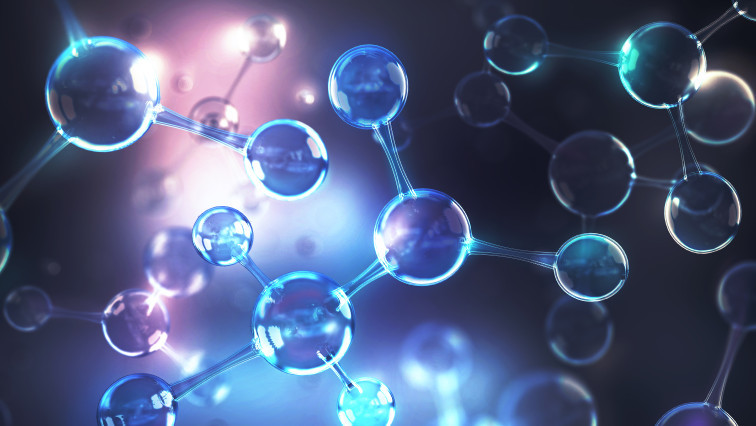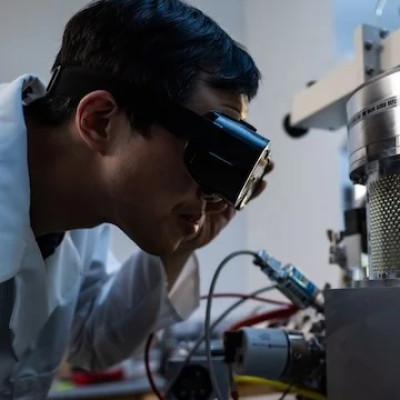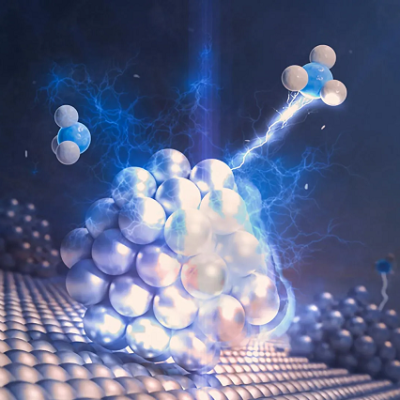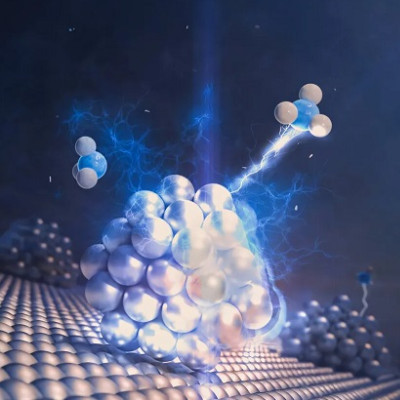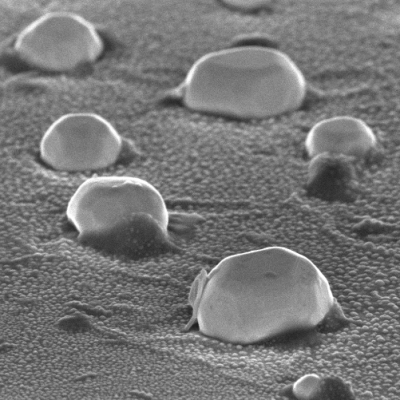Recently, Zhenxing Li and his team from China University of Petroleum (Beijing) have made exciting progress in the preparation of HER catalysts, using a simple one-pot method to synthesize ultra-small hollow ternary alloy nanoparticles, including PtNiCu nanoparticles, PtCoCu nanoparticles and CuNiCo nanoparticles. During synthesis, the displacement reaction and oxidative etching played important roles in the formation of hollow structures. The average size of PtNiCu nanoparticles is only 5 nm and contains only 10% Pt (Figure 1). The unique hollow structure and large specific surface area increase the degree of surface atom exposure, provide abundant active centers, and make PtNiCu nanoparticles exhibit excellent electrocatalytic activity and stability. In alkaline electrolyte, the overpotential of hollow PtNiCu nanoparticles at 10 mA cm-2 is as low as 28 mV versus RHE with a Tafel slope of 52.1 mV dec-1 (Figure 2), which was lower than those of commercial Pt/C. In addition, its mass activity is 5.62-fold higher than that of commercial Pt/C system. This effectively reduces the cost of platinum-based electrocatalysts and ensures that platinum atoms are used more efficiently.
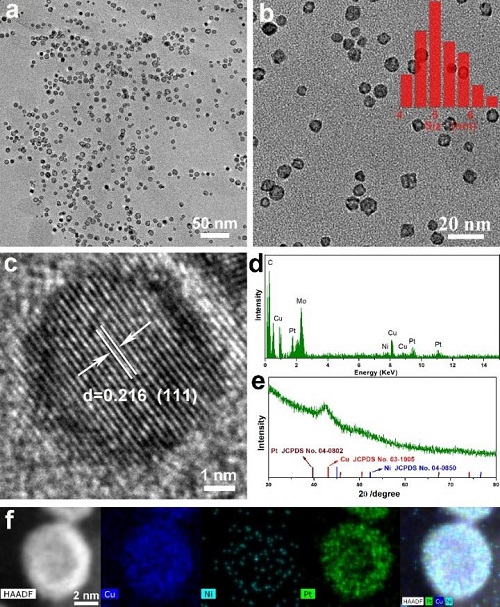
a) TEM image, (b) High-magnification TEM image (Inset of panel (b) shows its size distribution), (c) HRTEM image, (d) EDS of hollow PtNiCu nanoparticles. (e) XRD pattern and (f) EDX elemental mappings of hollow PtNiCu nanoparticle.
By analyzing the bonding and antibonding orbital filling, the density functional theory (DFT) calculations show that the ΔGH* of PtNiCu nanoparticles is 0.05 eV, which is close to zero (Figure 3). In the hydrogen evolution reaction (HER) reaction process, the bonding strength of different metals to the hydrogen intermediate (H*) was in the order of Pt > Co > Ni > Cu. Thus, the excellent HER performance of hollow PtNiCu nanoparticles can be attributed to moderately synergistic interactions between the three metals and H*. Combining theoretical calculations with experimental data, this work provides a new strategy for the design and preparation of low-cost and high-performance HER catalysts.
Read the original article on EurekAlert.

